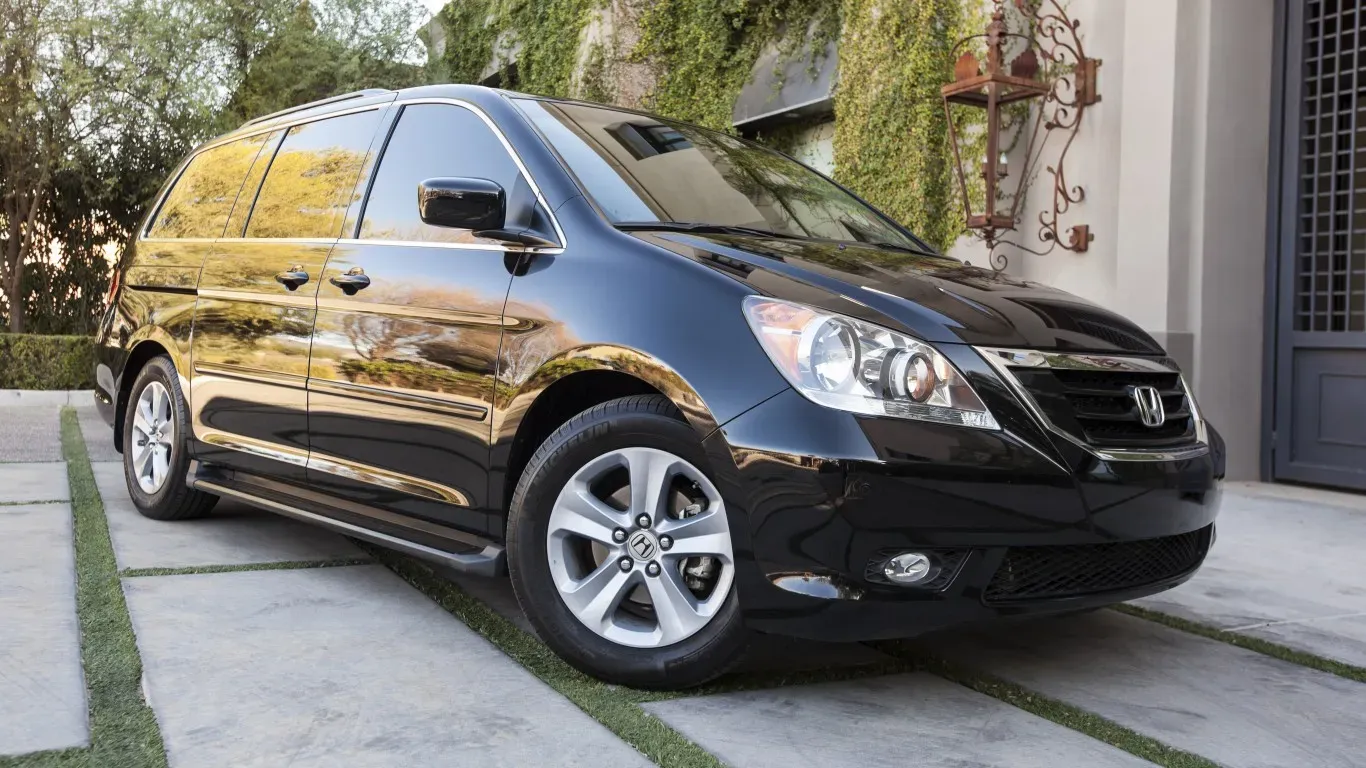In the world of automotive innovation, the Audi A2 stands as a remarkable example of forward-thinking engineering. Launched at the turn of the millennium, this compact car was ahead of its time, boasting a lightweight car design and an aluminum body that set it apart from its competitors. This classic car review delves into the unique aspects of the Audi A2, highlighting its contribution to fuel efficiency, urban mobility, and eco-friendly vehicles. As we explore the history and legacy of the Audi A2, it becomes clear that this car was not just another compact vehicle but a trailblazer in Audi history.
Table of Contents
ToggleKey Features of the Audi A2
| Feature | Description |
| Model Name | Audi A2 |
| Body Material | Aluminum body |
| Weight | Approximately 895 kg (lightweight car) |
| Engine Options | 1.4L petrol, 1.6L FSI, 1.4L TDI |
| Fuel Efficiency | Up to 60 MPG (fuel efficiency) |
| Design Focus | Urban mobility, compact car design |
| Innovation | First mass-produced car with a full aluminum body |
| Eco-Friendly Aspects | Low emissions, high fuel efficiency |
| Production Years | 1999-2005 |
| Legacy | Influenced modern eco-friendly vehicles and sustainable car design |
The Vision Behind the Audi A2
When Audi set out to create the Audi A2, the goal was clear: to redefine urban mobility with a car that was both practical and innovative. The Audi A2 was designed with a focus on compact car design that prioritized efficiency and sustainability. The engineers at Audi envisioned a vehicle that would cater to the needs of city dwellers, offering a blend of agility, performance, and eco-consciousness. This vision led to the creation of a car that was lightweight, efficient, and easy to maneuver—qualities that remain highly valued in today’s automotive market.
Lightweight Innovation – The Aluminum Body
One of the most striking features of the Audi A2 is its aluminum body. This innovative use of materials was a bold move by Audi, setting a new standard for lightweight car construction. By reducing the car’s weight, Audi significantly improved its fuel efficiency and overall performance. The aluminum body not only contributed to the car’s agility but also played a key role in its sustainability, as lighter vehicles generally produce fewer emissions. This pioneering approach to car design has had a lasting impact on the automotive industry, influencing the development of more eco-friendly vehicles.
The Aerodynamics of the Audi A2
One of the lesser-discussed yet crucial aspects of the Audi A2 is its aerodynamic efficiency. Audi meticulously designed the A2 with a drag coefficient of just 0.28, a remarkable achievement for its time. This aerodynamic shape not only complemented the car’s lightweight design but also played a significant role in enhancing its fuel efficiency. The streamlined body minimized air resistance, allowing the Audi A2 to cut through the air with minimal drag, which contributed to its excellent performance and low fuel consumption. This focus on aerodynamics was part of Audi’s broader strategy to create a vehicle that was both innovative and practical for urban mobility.
Interior Space and Practicality
Despite its compact dimensions, the Audi A2 offered a surprisingly spacious interior. The car’s innovative design included a high roofline and a clever use of space, which provided ample headroom and legroom for passengers. The flat floor and foldable rear seats added to the practicality, making the A2 a versatile option for city dwellers. Audi’s focus on maximizing interior space without compromising on the car’s compact exterior was a key factor in its appeal. The Audi A2 exemplified how compact car design could offer both comfort and practicality, setting a standard for future urban vehicles.
Technological Features and Innovation
The Audi A2 was not just about its lightweight structure and fuel efficiency; it was also packed with advanced technology for its time. The car featured a fully digital dashboard, which was quite futuristic when it was launched. Additionally, it offered features like electronic stability control, anti-lock brakes, and an innovative service indicator that informed drivers when the car needed maintenance. These technological advancements underscored Audi’s commitment to automotive innovation and positioned the A2 as a forward-thinking vehicle that embraced new technologies to enhance the driving experience.
Challenges and Market Reception
Despite its innovative features and groundbreaking design, the Audi A2 faced several challenges in the market. Its high production costs, due in part to the aluminum body, resulted in a price tag that was higher than many of its competitors. Additionally, the car’s unconventional design, while praised by enthusiasts, did not resonate with the broader market at the time. These factors contributed to the A2’s commercial struggle, leading to its discontinuation in 2005. However, the Audi A2 has since gained a cult following, with many appreciating its pioneering approach to eco-friendly vehicles and its role in shaping modern car design.
Fuel Efficiency and Urban Mobility
The Audi A2 was designed with fuel efficiency in mind, making it an ideal choice for city driving and urban mobility. Its compact size, combined with the lightweight design, allowed it to achieve impressive fuel economy figures. This focus on efficiency was not just about saving money at the pump; it was also about reducing the car’s environmental footprint. In many ways, the Audi A2 was ahead of its time, embodying the principles of sustainability that are now central to the design of eco-friendly vehicles. For city dwellers looking for a car that was both economical and environmentally conscious, the Audi A2 was the perfect solution.
Audi A2 in the Context of Audi’s History
The Audi A2 occupies a unique place in Audi history. At a time when most car manufacturers were focused on power and luxury, Audi took a different path by prioritizing innovation and sustainability. The Audi A2 was not just a car; it was a statement about the future of automotive design. Its introduction marked a significant shift in the industry, as more manufacturers began to explore automotive innovation that prioritized environmental responsibility. While the Audi A2 may not have been a commercial success at the time, its influence can be seen in many of today’s eco-friendly vehicles and compact car designs.
Legacy and Impact on the Automotive Industry
The legacy of the Audi A2 is one of innovation and forward-thinking design. Despite its relatively short production run, the Audi A2 has left a lasting impact on the automotive industry. Its pioneering use of an aluminum body and focus on fuel efficiency have become increasingly relevant as the industry shifts toward sustainability. Today, the principles that guided the design of the Audi A2 are more important than ever, as manufacturers seek to create vehicles that are both efficient and environmentally friendly. In many ways, the Audi A2 was a precursor to the modern eco-friendly vehicles we see today, proving that innovation can sometimes be ahead of its time.
Conclusion
In conclusion, the Audi A2 remains a standout example of automotive innovation in the early 21st century. Its lightweight design, aluminum body, and focus on fuel efficiency made it a trailblazer in the compact car segment. While it may not have achieved widespread commercial success, the Audi A2 has earned its place in Audi history as a car that dared to be different. As we look back on this classic car review, it’s clear that the Audi A2 was more than just a car—it was a vision of what the future of mobility could be.
FAQS
1- Is the Audi A2 rare?
Yes, the Audi A2 is considered rare due to its limited production run and unique design, making it a sought-after classic today.
2- What is the price of Audi A2?
The price of an Audi A2 varies depending on its condition, typically ranging between $5,000 and $15,000 in the used car market.
3- Is an Audi A2 a good car?
Yes, the Audi A2 is praised for its fuel efficiency, innovative design, and practicality, making it a great choice for urban driving.
4- Why was the Audi A2 discontinued?
The Audi A2 was discontinued due to high production costs and low sales, despite its innovative features and forward-thinking design.
I’m Waqas, an electric vehicle enthusiast and tech writer with over 6 years of experience covering the EV industry. I write in-depth articles, comparisons, and reviews to help readers understand the fast-evolving world of electric mobility. From battery technology to EV launches and charging trends, I aim to make complex EV topics simple, engaging, and informative for everyday drivers and curious readers alike.





